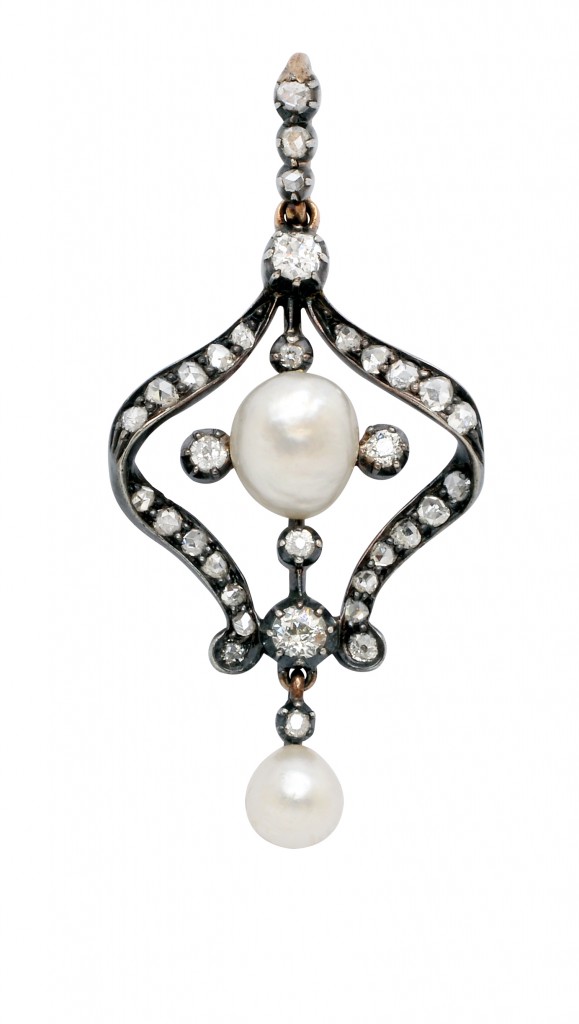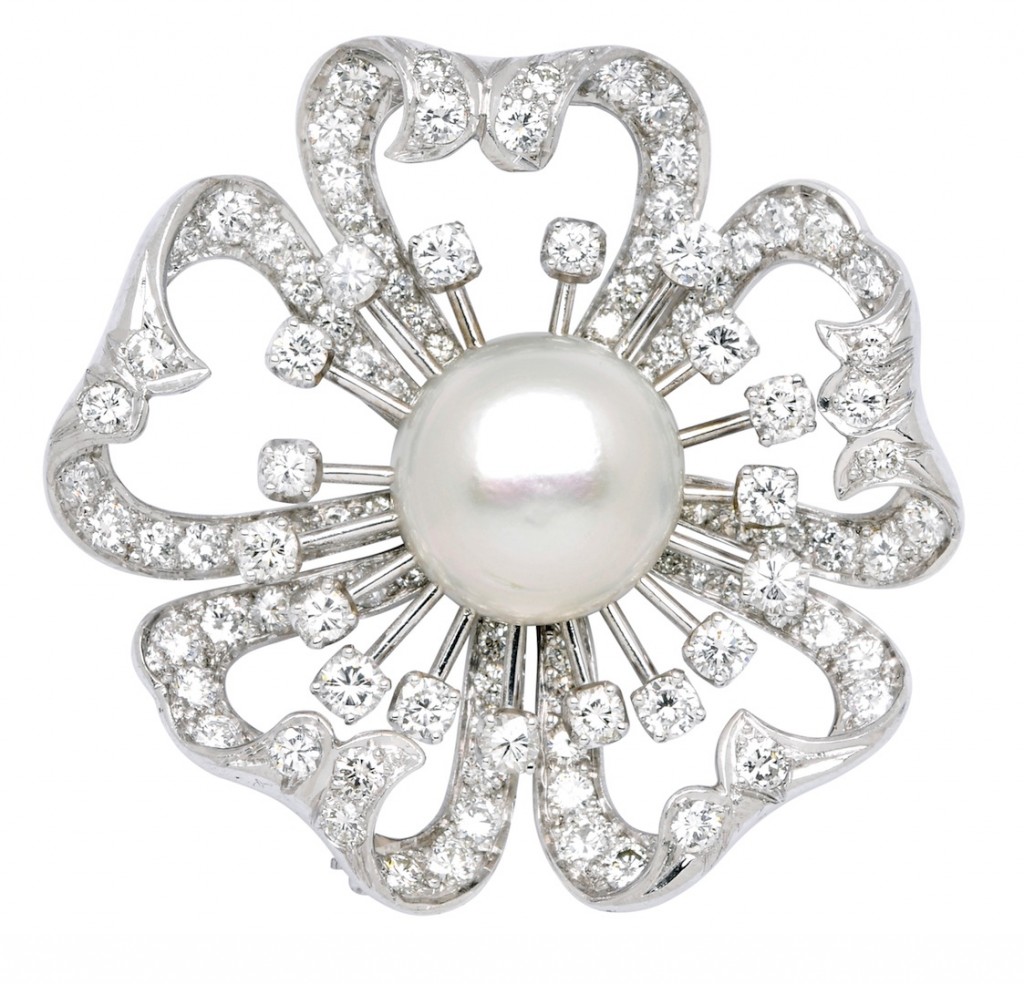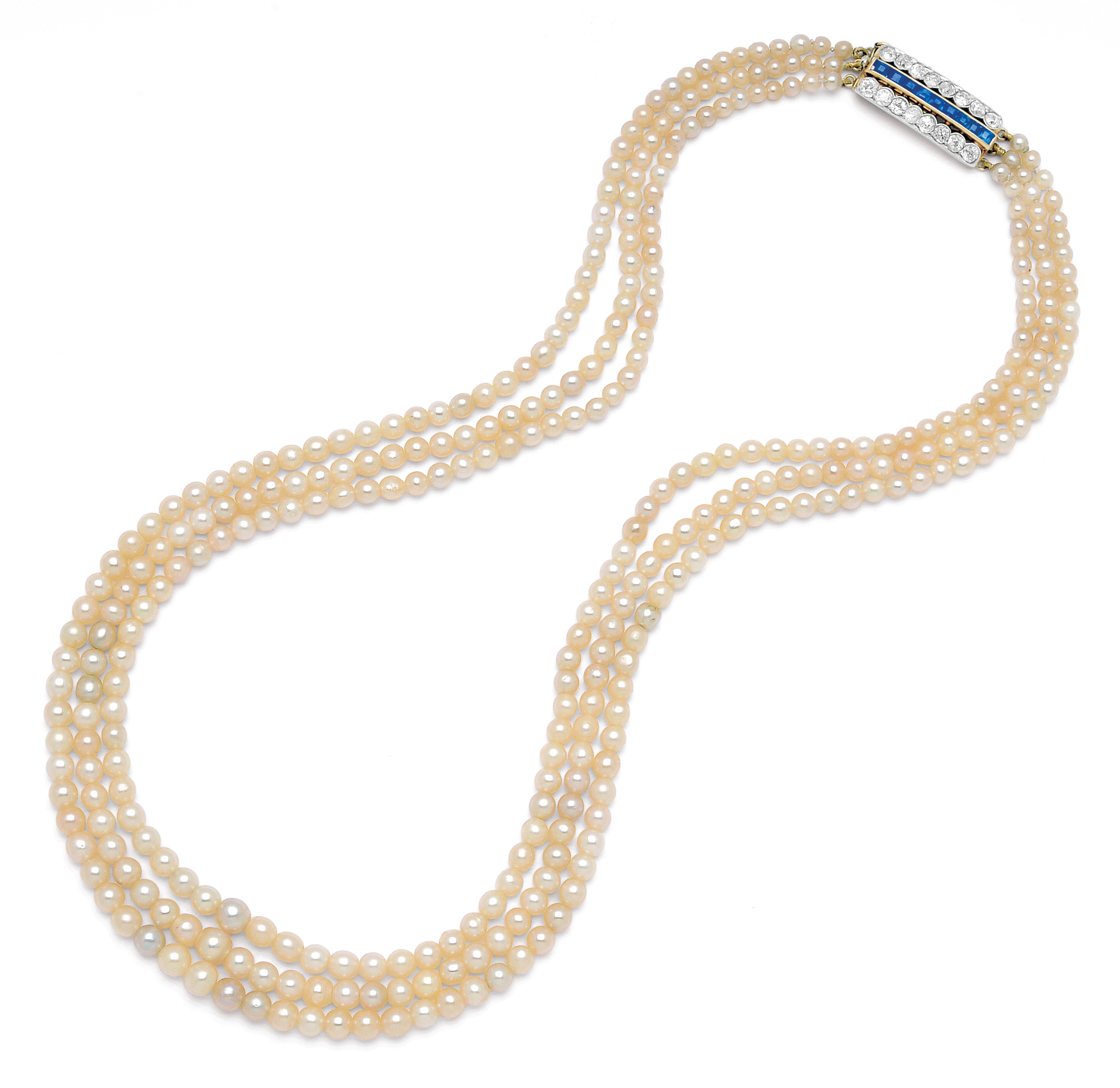When we think of a pearl, we tend to think of a round white shiny object that comes from an oyster of some sort.
A pearl may well fit that description, but there are so many variations available, it is quite surprising.
Historically, a pearl is a roundish to randomly shaped gem that has formed accidentally in a shellfish, usually a bivalve. A bivalve is a shell fish (mollusc) that has a two part shell, like an oyster, a clam, or even a quahog.
Hold on… QUAHOG?, what’s that? A quahog (usually pronounced “cohog”) is a shellfish found along the Eastern Coast of North America and particularly around Cape Cod and New Jersey (along the Jersey shore). These clams are an important food source, and which very rarely will produce a lilac colour pearl. Lot 119 in the June 22, 2014 Dupuis sale features one of these rare and unusual pearls, measuring 10.3mm in diameter, and estimated $1,500-$2,500.00 with a diamond on a gold stick pin. The catalogue will be available shortly at www.dupuis.ca
We do occasionally find a pearl in a univalve mollusc, too. A univalve is a mollusc that has a one-part shell, like a snail or perhaps a conch, from the Caribbean. Conch pearls are usually pink, and are also very rare and valuable. Lot 660 in the spring sale features a bright pink conch pearl, estimated at $1,000-$1,200
With the development of pearl culturing in Japan around 1915, the pearl industry changed forever. What we think of as a pearl today is a cultured pearl.
A cultured pearl is still produced by these natural gem-makers of the sea (or lake or river), but humans help out by placing something inside the molluscs to start the process of pearl growth.
Now we have pearls being cultured in the ocean, with the traditional cultured pearls grown in cooler waters such as those around Japan, the larger South Sea cultured pearls grown in warmer waters and in larger molluscs, black cultured pearls cost famously grown around Tahiti, and many shapes and sizes of cultured pearls grown in the freshwater (or “sweet water”) of lakes and rivers, particularly in China.
Freshwater cultured pearls can grow in very large sizes and in many unusual shapes and colours. The upcoming auction Dupuis will be featuring a few necklaces of large and interesting freshwater cultured pearls. Freshwater cultured pearls make a great statement for a remarkably modest price. Lot 407 in the Spring sale features huge freshwater cultured pearls, and is estimated at $1,400-$1,600.
![]()
![]() Still, natural pearls remain rare and highly desirable. We really see a lot of interest in natural pearls because they are not replaceable. In the Spring 2014 (June 22) sale there are several notable natural pearl jewels. Among the natural pearls in the sale are one brooch, lot 365, with a notably large, 14.74mm natural pearl, and a necklace, lot 277, with three strands of pearls (including a single cultured pearl).
Still, natural pearls remain rare and highly desirable. We really see a lot of interest in natural pearls because they are not replaceable. In the Spring 2014 (June 22) sale there are several notable natural pearl jewels. Among the natural pearls in the sale are one brooch, lot 365, with a notably large, 14.74mm natural pearl, and a necklace, lot 277, with three strands of pearls (including a single cultured pearl).
Pearls are probably the original gem, because they are ready to use straight out of the shell, and one can imagine an early cave dweller with a broken tooth having enjoyed a meal of oysters and carrying the reward of a beautiful lustrous pearl.





